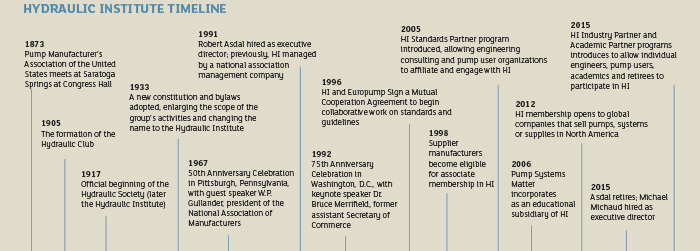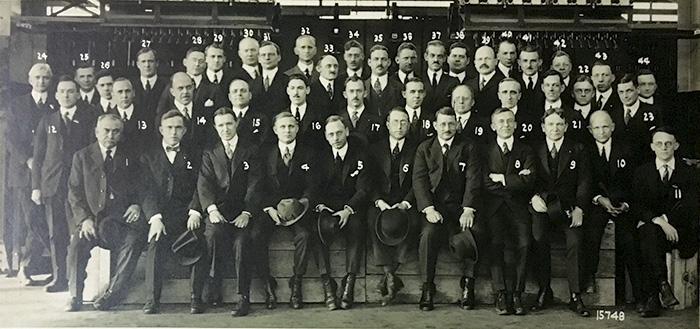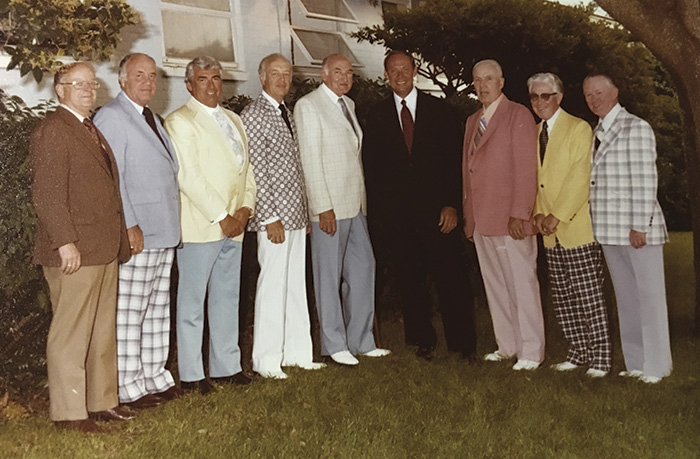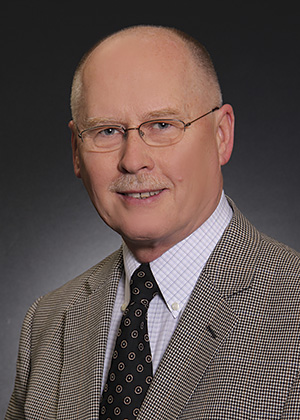In 1917, representatives from 16 pump companies met to establish the Hydraulic Institute, which not only led to standards for the manufacture and supply of pumps, but opened the door to growth and a robust industry. HI’s 100th birthday will be marked by celebrations, learning opportunities and a commemorative coffee table book. Looking back over the last 100 years, HI has set the standard for operational excellence not just in the United States, but also with a growing global reach. For information about anniversary events, visit pumps.org. While the official beginning of the Hydraulic Institute is listed as 1917, the history of the organization precedes that date, as groups of pump industry professionals would gather in various ways to promote and improve their industry. Early records show that on July 9, 1873, the Pump Manufacturer’s Association of the United States met at Saratoga Springs at Congress Hall.
 Hydraulic Institute Timeline
Hydraulic Institute Timeline A 1921 meeting includes 44 pump industry representatives in South Philadelphia
A 1921 meeting includes 44 pump industry representatives in South Philadelphia Past presidents (left to right) J.R. Vidmar-1973, J.B. Freed-1976, J.C. Meyers-1970, G.W. Jensen-1974, W.D. Staley-1958, T.E. Bennett-1975, C.B. Bason-1959, R.A. Prosser-1972, J.T. Culleton-1977
Past presidents (left to right) J.R. Vidmar-1973, J.B. Freed-1976, J.C. Meyers-1970, G.W. Jensen-1974, W.D. Staley-1958, T.E. Bennett-1975, C.B. Bason-1959, R.A. Prosser-1972, J.T. Culleton-1977 Former longtime HI Executive Director Robert Asdal
Former longtime HI Executive Director Robert Asdal- pumps and energy conservation
- adequacy of suction piping
- monitoring pump performance
- proper lubrication procedures”

